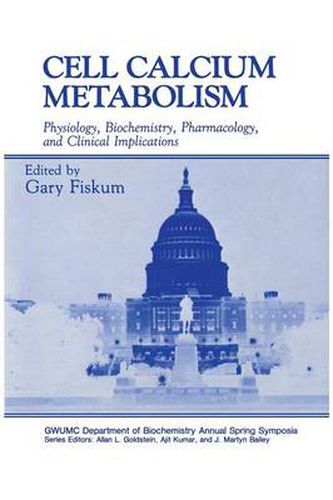Readings Newsletter
Become a Readings Member to make your shopping experience even easier.
Sign in or sign up for free!
You’re not far away from qualifying for FREE standard shipping within Australia
You’ve qualified for FREE standard shipping within Australia
The cart is loading…






This title is printed to order. This book may have been self-published. If so, we cannot guarantee the quality of the content. In the main most books will have gone through the editing process however some may not. We therefore suggest that you be aware of this before ordering this book. If in doubt check either the author or publisher’s details as we are unable to accept any returns unless they are faulty. Please contact us if you have any questions.
A widespread appreciation for the role that calcium plays in cell physiology and patho physiology has now been achieved due to the pioneering studies of many of the scientists who attended the VIIth International Spring Symposium on Health Sciences at George Washington University in Washington, D. C. The participants in this unique meeting rep resented diverse fields of basic and clinical research, such as molecular physiology, oncology, molecular genetics, cardiology, bioenergetics, pathology, and endocrinology. The content of the proceedings of the symposium represents work in these and other areas of biomedical research. Organization of the book is aimed at striking a balance between the biochemistry 2 and physiology of normal cell Ca + metabolism and the pathological consequences of al 2 terations in cell Ca + homeostasis. The first section of the book is devoted to the transport mechanisms responsible for 2 2 regulating intracellular Ca + and the pharmacological modalities for controlling cell Ca + . Particular attention is given to the molecular basis for plasma membrane transport activities, 2 2 including the ATP-driven Ca + pump, the Na + -Ca + exchange system, and voltage sensitive 2 Ca + channels. The second section covers the exciting relationships between phosphoinositide metab 2 olism, signal transduction, and cell Ca + metabolism. This section begins with an eloquent overview by Professor Michael Berridge, who was the keynote speaker at the symposium and the recipient of the scientific merit award.
$9.00 standard shipping within Australia
FREE standard shipping within Australia for orders over $100.00
Express & International shipping calculated at checkout
This title is printed to order. This book may have been self-published. If so, we cannot guarantee the quality of the content. In the main most books will have gone through the editing process however some may not. We therefore suggest that you be aware of this before ordering this book. If in doubt check either the author or publisher’s details as we are unable to accept any returns unless they are faulty. Please contact us if you have any questions.
A widespread appreciation for the role that calcium plays in cell physiology and patho physiology has now been achieved due to the pioneering studies of many of the scientists who attended the VIIth International Spring Symposium on Health Sciences at George Washington University in Washington, D. C. The participants in this unique meeting rep resented diverse fields of basic and clinical research, such as molecular physiology, oncology, molecular genetics, cardiology, bioenergetics, pathology, and endocrinology. The content of the proceedings of the symposium represents work in these and other areas of biomedical research. Organization of the book is aimed at striking a balance between the biochemistry 2 and physiology of normal cell Ca + metabolism and the pathological consequences of al 2 terations in cell Ca + homeostasis. The first section of the book is devoted to the transport mechanisms responsible for 2 2 regulating intracellular Ca + and the pharmacological modalities for controlling cell Ca + . Particular attention is given to the molecular basis for plasma membrane transport activities, 2 2 including the ATP-driven Ca + pump, the Na + -Ca + exchange system, and voltage sensitive 2 Ca + channels. The second section covers the exciting relationships between phosphoinositide metab 2 olism, signal transduction, and cell Ca + metabolism. This section begins with an eloquent overview by Professor Michael Berridge, who was the keynote speaker at the symposium and the recipient of the scientific merit award.